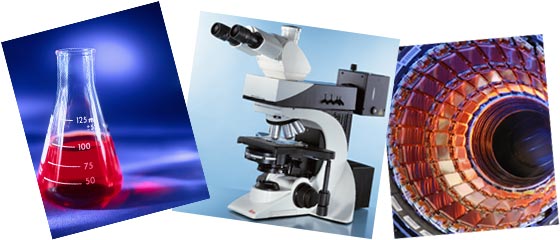 ![[Header]](../XuShared2/Line3.jpeg)

Add a Comment (Go Up to OJB's Blog Page) Favourite Things 3 Part 2Entry 1491, on 2013-01-30 at 14:53:36 (Rating 3, Science) In my last blog entry I started talking about another one of my favourite things: the Hubble Space Telescope. Unfortunately that headed off track a bit and finished as a discussion of Edwin Hubble, the famous astronomer that the HST was named after. So I guess I should finish off the original subject now.
The idea of a space telescope goes back almost 100 years and the advantages of having an instrument above the Earth's atmosphere have been obvious for a long time. Apart from avoiding the constant dread for every astronomer - cloud on the night of an important observation - having a scope above the atmosphere also gives better results than even a "perfect" observing night on Earth because even under excellent conditions the Earth's atmosphere both blocks some wavelengths of light (such as infrared) and distorts the light which does get through.
There was further discussion on the idea until 1968 when NASA began developing plans for actually building and launching a space telescope. There were numerous delays, especially after the Challenger disaster, but eventually the HST was launched on Shuttle mission STS-31 on 24 April 1990. At the time the original cost estimate of $400 million had increased to $2.5 billion.
After the delays and cost increases it was extremely disappointing to find after the launch that the HST was severely flawed. Although the images it created were better than anything from Earth at the time they were still much less precise than expected.
The fault was in the main mirror which was the most precisely made optical element ever, being accurate to 10 nanometers. Unfortunately, even though the mirror was an incredibly precise shape it was the wrong shape because of an error in the testing done by the American optics company, Perkin-Elmer.
Building and fitting a new main mirror was impractical so it was decided to correct the error by fitting a new secondary mirror (much smaller than the main one) and by changing the optics in the instruments attached to the telescope. Perkin-Elmer also did this work and this time they got it right! The corrected telescope delivered stunningly precise images of space.
Here's a few basic facts and figures about the HST: weight 11 tonnes, diameter 4.2 meters, length 13.2 meters, orbit height 569 kilometers (orbits the Earth once every 97 minutes at a speed of 28,000 kilometers per hour).
So an 11 tonne instrument is flying around the Earth at 28,000 kph. How is it pointed at different objects and, more importantly, how is it kept pointing at them? That is one of the more amazing abilities of the instrument. It can lock onto a target without deviating more than 0.007 arcseconds. That is the equivalent of the width of a human hair seen at a distance of 1 mile. That's quite an impressive feat of engineering precision, I think!
The pointing is done using gyroscopes. As a gyro (a heavy spinning wheel) spins in one direction it forces the telescope which it is attached to to move in the opposite direction. This is very precise but quite slow technique but using rocket thrusters would be far less precise, consume fuel when used, and leave gas around the scope possibly spoiling the imaging. The gyros are powered from the HST's solar panels and suffer none of these problems.
By 2010 the total running cost of the HST was about $10 billion, which sounds a lot. But that is for over 20 years of operation of a superb instrument which has made so many great discoveries. It also includes upgrades for many of the instruments attached to the HST.
Is that a lot? The US spent $4.7 trillion on bailing out financial institutions after the financial crisis. They wasted 470 times as much as the cost of the HST on helping out a bunch of worthless parasites. And in half the time the HST has been run (the last 10 years) the US has spent over 140 times as much ($1.4 trillion) on wars. And what do they mainly achieve apart from killing innocent people?
So the HST, even with significant cost overruns, has been great value for money. It truly deserves to be one of my favourite things.
 There are no comments for this entry. 
You can leave comments about this entry using this form. To add a comment: enter a name and email (both optional), type the number shown above, enter a comment, then click Add.
Note that you can leave the name blank if you want to remain anonymous.
Enter your email address to receive notifications of replies and updates to this entry.
The comment should appear immediately because the authorisation system is currently inactive.
![[Comments]](../XuShared/Comment1B.jpeg) ![[Preview]](../XuShared/Comment6B.jpeg) ![[Blog]](../XuShared/Up2B.jpeg)
Insert query failed: INSERT INTO log VALUES (NULL,1,'2025-12-26','141450','BlogPage.html%3Fcode=1491','XuBlog','216.73.216.208','Mozilla/5.0 AppleWebKit/537.36 (KHTML, like Gecko; compatible; ClaudeBot/1.0; +claudebot@a','');. |

![[Comments]](../XuShared/Comment1B.jpeg)
![[Preview]](../XuShared/Comment6B.jpeg)
![[Blog]](../XuShared/Up2B.jpeg)